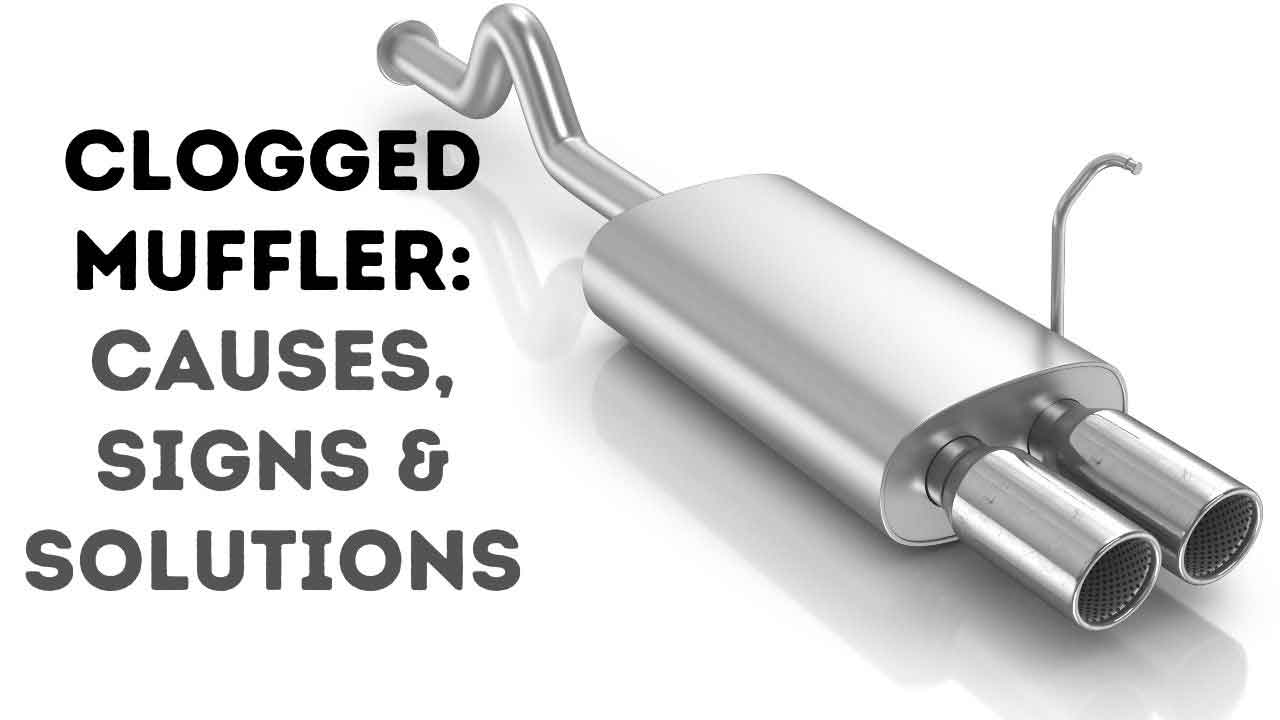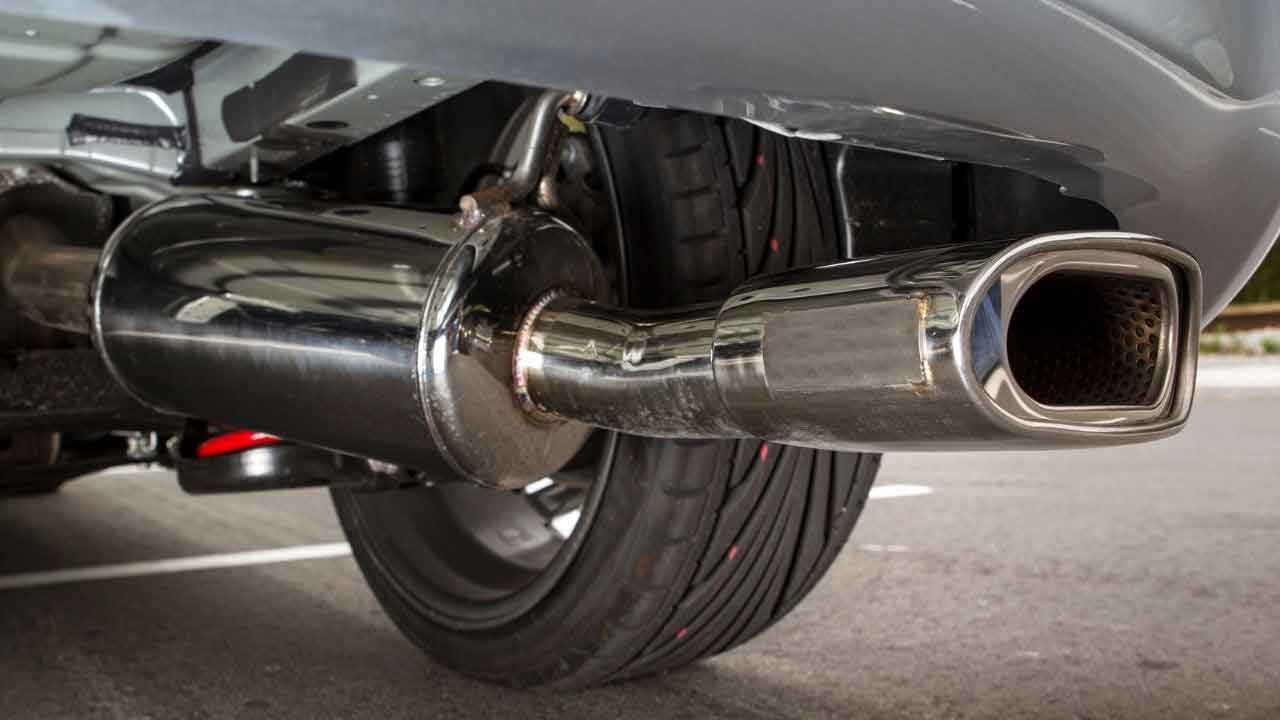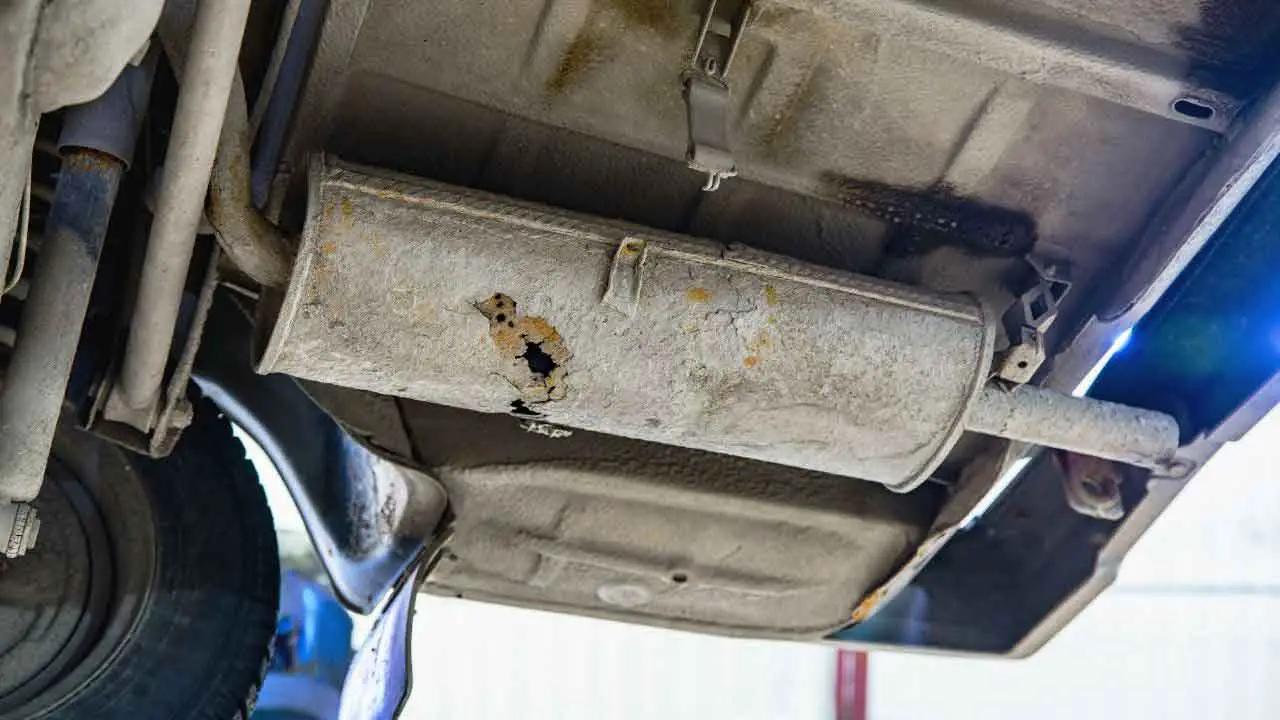Muffler is an integral part of your vehicle’s exhaust system. It suppresses the sound making your ride a comfortable one.

Due to both external and internal factors, mufflers get clogged sometimes leading to various problems.
So, we have summed up the most common reasons behind a clogged muffler, what are the warning signs that you should look out for, and how to get over the problem. Keep reading!
Some Common Causalities Of A Clogged Muffler
Here are some common causes that may cause your muffler to clog up-
1) Constant exposure to salt (especially if you live near the beach)
If you live near the beach or frequently visit beach or marine drives, then the build-up of rust is inevitable. It can also happen if you constantly travel up and down the road paved with salt during the snowy and wintry months. The salt will get in there. It might not impact your car right away, but it will cause rust build-up resulting in a clogged muffler in the end.
2) Driving Carelessly on Bumpy Roads
Do you travel on roads that have plenty of speed bumps? Do you travel down roads filled with some potholes that have not been filled in yet? You might also be hitting other objects (like a dead animal) lying on the road.
Once again, you might not notice those things at the time, but it does add up. You could be traveling in areas that have low-clearance holes. That can do some damage to your exhaust system (especially if you hit the area enough and at a high speed.)
3) Using Wrong Products in Exhaust Pipe
Do you use custom fabrication that is not recommended or advisable through the manufacturer? That is another common cause of a clogged muffler. Using the wrong products on your car can lead to a clogged, rusted, and otherwise damaged muffler. The wrong product will reduce lifespan and accelerate possible damages.
You also have to keep in mind that most mufflers last only seven years or less. You are better off getting a new muffler once you reach the five-year mark if you are a low-maintenance driver. Otherwise, the above conditions will make matters worse.
What To Look For Concerning A Clogged Muffler
1) Pay close attention to the sound (You will hear a revving start up.)
It is not like the revving you hear when the engine starts purring as normal. You are going to hear the irritation in the engine. It is going to sound cranky and not very happy. It is like having a hard time breathing due to mucus caught in the respiratory system and lungs.
You may see the check engine light illuminated as well due to the malfunctioning car silencer in the exhaust system.
This can be caused by several things. including having a foreign object inside or a small animal. The small animal might be a bit extreme, but it makes the point.
2) There is an internal blockage (of some kind)
Your engine is going to lose acceleration and performance while on the road. It will feel sluggish. You also might find you need to use more horsepower. That will put more tension on the engine and car system.
3) Unusual Color of Exhaust Gas (Dark)Due to the internal blockage, the exhaust is not able to pass through the tailpipe successfully. That means you are going to have dirt building up inside. The amount of dirt depends on how bad the internal blockage is.
Your engine will emit a black color in response to this internal blockage. It will come in the form of smoke. Some of you might have a light shade of black while others have a darker shade. Either, this is messing up your engine.
Where is the muffler located?
It is located underneath the vehicle. You should find a pipe having two round shaped tools attached. One is catalytic converter and the other is the muffler we are talking about here. It operates at a very hot temperature (which is another reason why it is not the easiest thing to fix).
A trick to consider is checking the loosened exhaust connections. Any kind of crack in the connections can sound just as bad (maybe worse) than a clogged muffler. That is why you (or a trusted mechanic) should check the exhaust connections first. Take a look at the clamps, hanger, and brackets before anything else. A reliable mechanic will know what to do.
Make sure they are very tight and secure. The problem does not lie with the exhaust system connections if they are secured properly. The problem will indeed lie with the muffler.
An easy to check the connections is to spraying detergent mixed water on the connections while the engine is running. So, you will see bubbles forming up if any leak or loose connection is present.
You might be able to get away with a small patch job if the muffler has only small cracks and holes. You can install an inexpensive patch kit or ask your mechanic to use one.
The adhesive tape will bond with the muffler and the high temperature that it operates at.
Will it work long-term?
Probably not. It is like using a spare to get you home safely. You will need to have it repaired or replaced ASAP. In most cases, you will have to commit yourself to buy a replacement muffler(depending on how bad the damage is).
Minor damages can be worked around(at least temporarily). Major damages have to be replaced and/or repaired right away. To be clear, in terms of major damage, most mechanics will not suggest a repair job. They will tell you to replace it.
Your mechanic can advise you on what is best to do.
How Do You Fix A Clogged Muffler?
The best solution I can give is to have an experienced mechanic work on the vehicle. The reason is that working on a muffler is not easy. It is one of the hardest parts of the car to repair if you do not know what you are doing.
However, you can see whether the problem is actually caused by a clogged muffler or a loose connection in the exhaust pipe. Loose connection or leak in the exhaust can be easily patched.
However, if you are determined to give it a shot. You can try the degreaser method. Although this won’t work with thick build-up caused clogs. Here is what you need to do-
1. Remove the muffler from the Exhaust Pipe
The first step is removing the muffler from the exhaust system. Different vehicles have different types of installation. Some mufflers are welded with the pipe while some are connected with nuts.
Welded mufflers require you to cut the connections to remove it from the exhaust pipe. However, this needs welding when you will install the muffler after unclogging. So, not a great option to go with.
In case of nuts, use a breaker bar if the nuts are too jammed. You can use penetrating oil to make things smooth as well.
2. Prepare a Bucket of Degreaser
Prepare a bucket of degreaser. You don’t need any harsh chemicals here. Use detergents that can clean oil and thick build up inside the muffler.
Be cautious in this step. Pouring a muffler that has many loose foreign elements inside can get more clogged rather than cleaning. This only applies to minor oil or carbon-based clogs.
You may find our take on causes of engine misfire helpful. We have covered topics like why tire rotation is good, and buying guide on wheel locks for trailer and roll up tonneau covers.
3. Soak the Muffler in for a Night
Soak the muffler in the bucket for a night. Waiting for 24 hours should give you a good result.
Another thing you can do to accelerate the process is shaking the muffler a few times. This will cause the internal build-ups to get loose and diminish.
4. Drain, Clean & Reinstall
After leaving the muffler in the degreaser for about a full day, drain out the water safely. Clean the muffler and get rid of every drop of water from the degreaser.
After thorough cleaning up and drying out the muffler, you can install it in the car and see if things have improved or not.
If the situation does not improve, buy a replacement muffler and replace it.
Another unorthodox method to try to unclog the muffler when there is no way out rather than replacing it is to separate the outer housing and clean the internals. Here is the process you can follow-
1. Separate the Muffler Outer Housing
This is only applicable to very few mufflers that come in detachable housing.
When separating the housing, make sure not to damage it. Damaging it will need you to replace the muffler with a new one.
2. Remove Build-Up with Scraper
After unfolding the muffler, you should now see the clogs inside. Use a scraping tool, a screwdriver will do the job, to remove the thick carbon or materials that built up in the muffler.
After removing the thick materials, use a brush to eliminate the residues and make things clean before attaching the outer housing in the muffler and reinstalling it.
N.B. We don’t recommend using any unclogging method stated here to unclog a muffler that works well. You should attempt these methods only as a last resort to unclog the muffler before replacing it. In most of the cases, the methods doesn’t work or people mess up doing that. So, proceed at your own risk.

